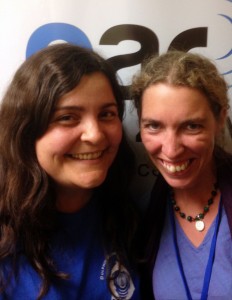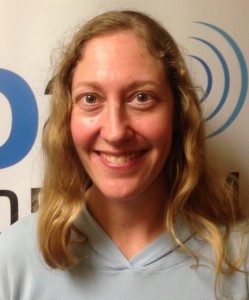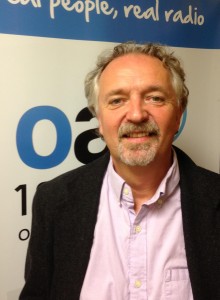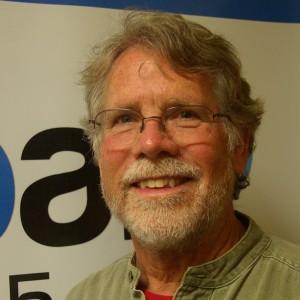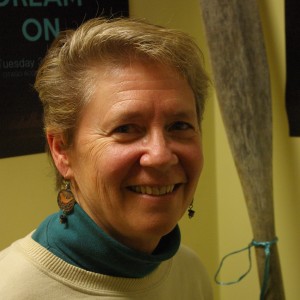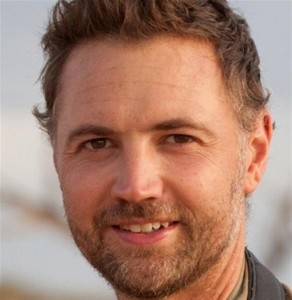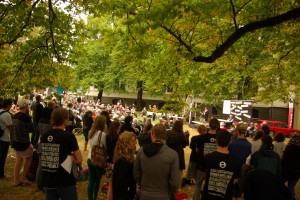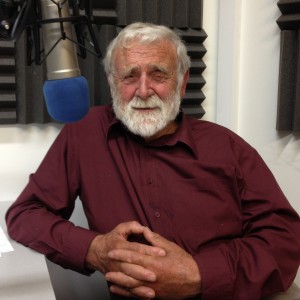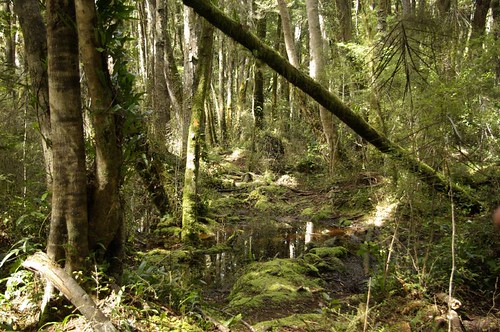
We need conservation for sustainable use as much as need preservation for intrinsic value… an “And” not an “Or”
It’s time we focussed on environmental care in production landscapes.
Henrik Moller is Professor at the Centre for Sustainability, and the principal investigator at Ecosystems Consultants.
Henrik describes the conservation estate as a “triumph”, but “now we need to turn our attention to the restoration of the wider environment”. Â Â This is a consequence of the
Paradigm shift accepting people as part of nature, and part of the contract, and not isolating environment as something outside us.
In other words:
We need to find ways of valuing conservation on production landscapes – a land sharing approach, but who pays?
This is, he says, a paradigm shift in how we think about conservation.  We need to expand our focus from the conservation estate to the whole environment.   Henrik applauds the “fantastic legacy from preservation (but) it’s a bit of prison if we ignore the ecology of our production landscapes” .  This proposal has several implications for the scale of  governance and responsibility.  It is “time we had a conversation about who pays for environmental good”.
Henrik asks if we could move to a position of paying farmers for environmental protection. This will be a challenge to neo-liberal abhorrence of subsidies, but Henrik points to how much we are distorting biological and physical systems and asks why the market system is so special it cannot be manipulated. The question remains as to why we should be paying people for not doing bad? What is really needed, says Henrik is conversation, we need to recognise that we are all in this together, “we need to stop the war talk and alienation – move beyond a battle to informed conversation and debate”.
On the 8th August, at CSAFE in Dunedin, Henrik will present  Enhancing our Heritage: Paradigm shifts for maximising conservation in New Zealand on behalf of the Tahi group.
Talking points:
We’ve known what to do to live sustainably for 100s of years, we just don’t seem to be able to do it
Wedded to the belief that we’ll heal the planet by the mass actions of lots of small scale local initiatives and people taking responsibility
We have to have just solutions with group agreement that emerges from dialogue with more listening than talking
We need to go beyond forums of conflict
Some marching on the street is needed, but the main action has to be through consensus about shared future
Simplifying those production landscapes – both structurally and diversity – we’ve led to degradation
There’s got to be a middle ground where NZ society agrees to pay for environmental goods
Resilience is accepting that we’re journeying without a roadmap
Power over people from same sour well as power over the environment
About how we interact with each other and how share a space and our love of a space and each other
Feel part of a club by looking after our shared environment
Sustainable use is harder to achieve than a reserve over the hill somewhere – day to day sustainable living is much harder, it involves so many other dimensions
(Am I an activist?). (you said you were an activist when you were younger, are you an activist now?) I hope I’m not dead yet. What is an activist? In the past I used to strut my stuff – yell my opinions, I had no shadow of a doubt that the system didn’t have the solution, everything from racist tours to environmental defense society – I was instrumental for taking 300 farmers in breach of discharges into a legal process – so I was very much interested in that forcing, amnesty, homosexual law reform. At the root of this I’m a humanist, it’s about respect for people, because in the end that will lead to the big reciprocity of looking after plants and animals. I was so puzzled then as an activist, I had a favourite Amnesty Poster – a typewriter with barbed wire – and I gave it to a friend and went round to his place a few months later and there was my beautiful poster scrawled over the top ‘but what about the environment?’. And I thought that’s really weird, I had seen the whole thing as a power – power over people, power over environment. They come from the same sour well, where very few lasting solutions will emerge. So now I hope I hope I’m an activist but working in a more subtle and inclusive way, some might even say a more cunning way. But this comes from a changed belief that the solutions are very much more about a patience and slow resolution and dialogue.
The central paradigm shift is accepting people as part of nature, as part of the contract.
We need to avoid a shootout between different constituents. We could call it pluralism, let’s go for “and†rather than “orâ€.
We’re failing conservation-wise, you could point to a lot of things…species declining…but worse we’ve created this idea that to be a greenie is to be a leftie, radical and not very practical, and not embracing economics. We’ve created a bit of a prison, the ideal would be if we could all see, not matter what we vote, that we’re all seeing the importance of environmental sustainability as sustaining us all, the platform on which we all stand.
We need to abandon war talk…if we carry on with fences between ourselves – saying that person is a conservationist and that person isn’t, we’ll be divided and fall….We’re all in this together.
Trainspotting:
Arun Agrawal Environmentality decentralization of environmental governance
We hope that this is the first in a series discussing the work of the Tahi group.
This is an extended version of the interview broadcast on OAR on the 1st August 2013.





